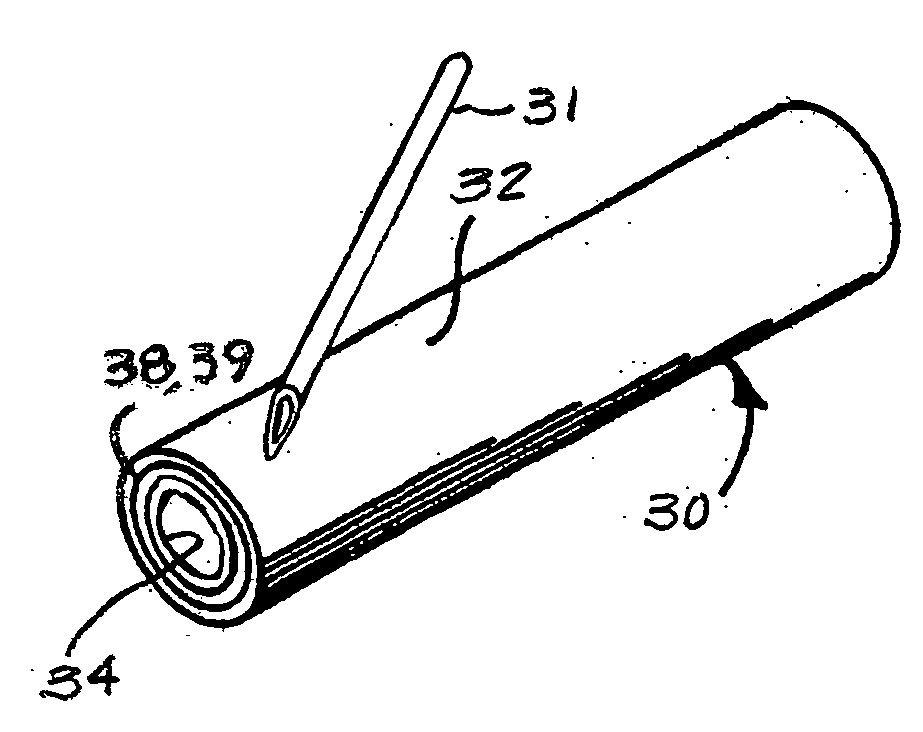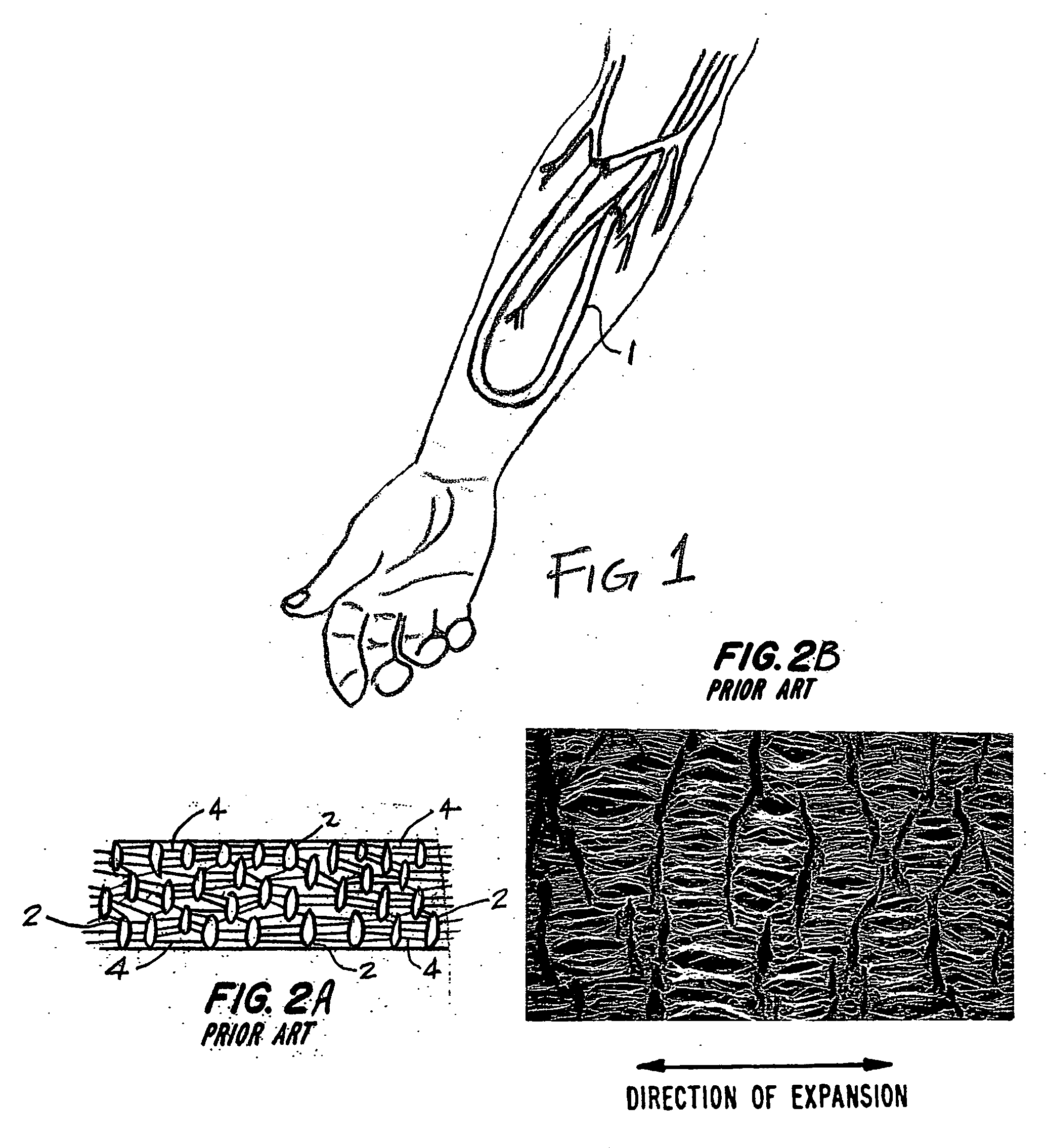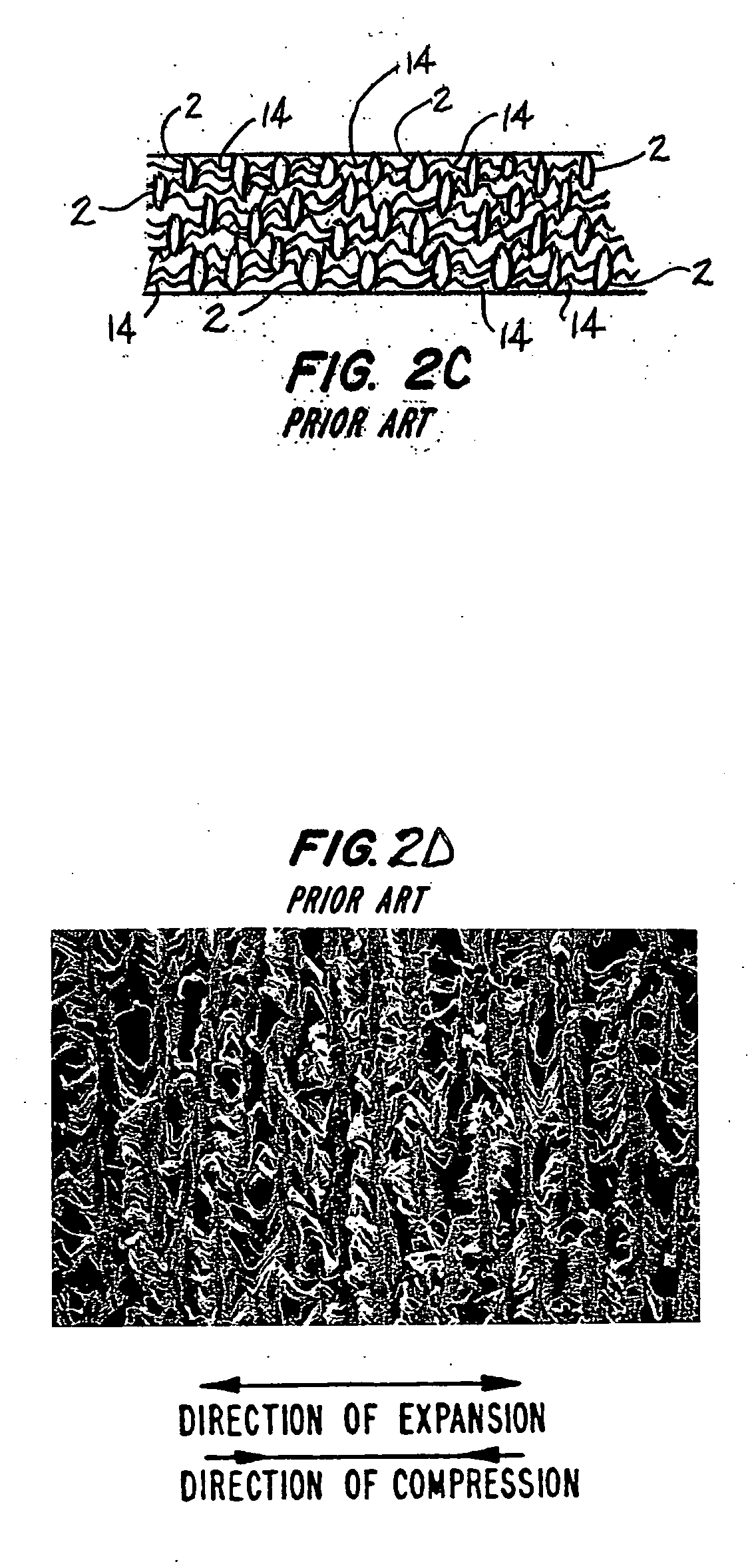Implantable devices with reduced needle puncture site leakage
a technology of implantable devices and puncture sites, which is applied in the field of implantable devices, can solve the problems of significant bleeding through the resulting holes, dialysis needles may also produce undesirable bleeding at the puncture site, and the puncture hole is punctured, and achieves good biocompatibility, good handling and bending properties, and longitudinal stretch. good
- Summary
- Abstract
- Description
- Claims
- Application Information
AI Technical Summary
Benefits of technology
Problems solved by technology
Method used
Image
Examples
example 2
[0078] Another example was created in the same manner as described for Example 1 except that both ePTFE tubes were tubes of greater wall thickness and had been processed by being longitudinally compressed and heat-treated to provide them with bent fibrils prior to construction of the example. These precursor tubes had a wall thickness of about 0.6 mm.
[0079] The resulting graft had a wall thickness of about 1.0 mm. It appeared that the wall thickness was the result of the relatively tight overwrap of the temporarily applied helical film wrap used during construction. When subjected to the dialysis needle cannulation test, the graft demonstrated a leakage of about 19 ml / minute. The graft showed good bending properties and offered longitudinal stretch.
example 3
[0080] An example of a tubular graft generally according to FIGS. 3A and 3B was made using the same ePTFE tubing as used for Example 1. A length of this ePTFE tubing was fitted over a mandrel and secured as described for Example 1, and coated with the same silicone adhesive in the same manner. The second tube was, also as described for Example 1, distended to an inside diameter of 8 mm. The second ePTFE tube was then coaxially fitted over the first, adhesive-coated ePTFE tube, with tension applied to the ends of the second tube to assure that it was fully extended longitudinally (with the fibrils of the microstructure in a substantially straight condition). A temporary helical wrap of a strip of thin ePTFE film was uniformly applied about the outer surface of the outer tube. The coaxial tubes were then longitudinally compressed together, by applying a compressive force to both tubes by pushing the opposing ends of the tubes toward each other by hand. No wrinkling or gross deformatio...
example 4
[0085] An example was made similarly to Example 1, except that the outer ePTFE tube was replaced with a thinner ePTFE film tube made by helically wrapping two layers of a strip of ePTFE film (about 2.5 cm width, 50 micron fibril length, 0.01 mm thickness and 0.3 g / cc density) about the surface of a 10 mm diameter mandrel. The film was applied in a “bias-ply” fashion by helically wrapping first in one direction, then returning, back over the first wrap. The pitch of the helical wrap resulted in adjacent edges of the helical wrap being about 2.5 mm apart as measured in the direction of the tube length. The film-wrapped mandrel was heated for 10 minutes in an air convention oven set at 370° C., removed from the oven and allowed to cool. After cooling, the helically-wrapped film tube was removed from the mandrel.
[0086] The film tube was carefully fitted over the outer surface of the adhesive-coated, tensioned silicone tube. Tension was applied to the ends of the film tube, causing it t...
PUM
| Property | Measurement | Unit |
|---|---|---|
| Time | aaaaa | aaaaa |
| Time | aaaaa | aaaaa |
| Radius | aaaaa | aaaaa |
Abstract
Description
Claims
Application Information
 Login to View More
Login to View More - R&D
- Intellectual Property
- Life Sciences
- Materials
- Tech Scout
- Unparalleled Data Quality
- Higher Quality Content
- 60% Fewer Hallucinations
Browse by: Latest US Patents, China's latest patents, Technical Efficacy Thesaurus, Application Domain, Technology Topic, Popular Technical Reports.
© 2025 PatSnap. All rights reserved.Legal|Privacy policy|Modern Slavery Act Transparency Statement|Sitemap|About US| Contact US: help@patsnap.com



